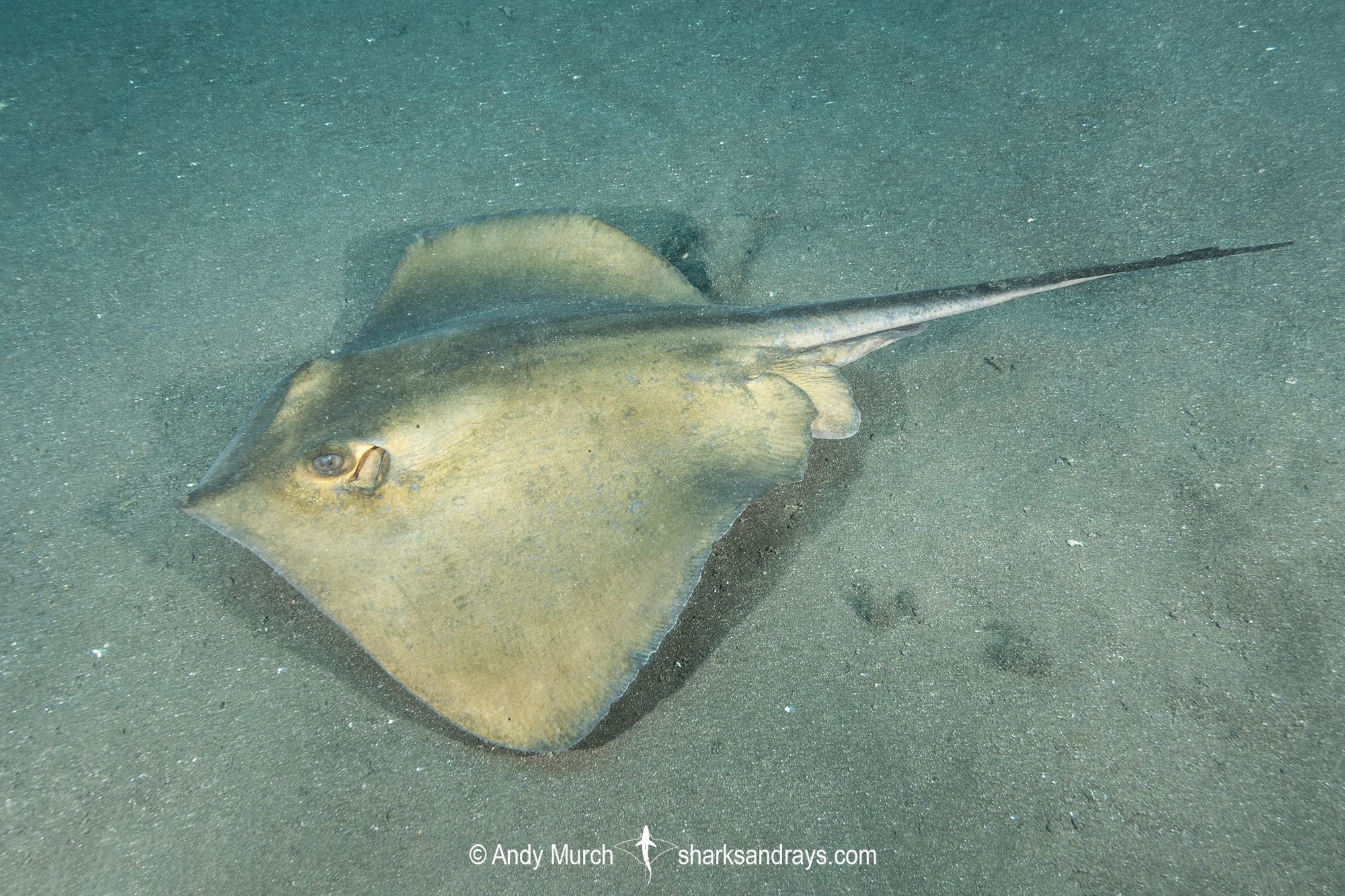Common name(s)
Tortonese’s Stingray.
Identification
A medium sized stingray with a kite-shaped disc that is slightly wider than long; disc width approximately 1.2-1.4 x length. Snout obtusely angular with a small, slightly protruding tip. Anterior margins of disc somewhat convex. Pectoral fin apexes narrowly rounded or angular. Pelvic fins narrow; posterior margins considerably posterior to pectoral disc margin. Pelvic fin apexes rounded.
Eyes medium sized and slightly protruding. Snout length 1.6-1.9 x combined eye and spiracle length.
Mouth usually contains 3 filamentous oral papillae. Deep labial furrows around mouth. Lower jaw sinuous; mostly convex but concave at symphysis. Small, skirt shaped nasal curtain with a heavily fringed margin. Nostrils oval shaped.
Disc lacks dermal denticles in young. Larger adults have some denticles and thorns on disc and midline thorns on tail anterior to sting. Tail broad and depressed at base, tapering gently to tail sting, then filamentous to tip. Tail length relatively short; 1.2-1.4 x disc width. Long, deep dorsal and ventral finfolds. One very long tail sting is usually present.
Colour
Dorsum golden brown. Disc margin and around eyes often dusky. Midline dusky; darkeing towards dorsal surface of tail. Side of tail pale. Ventrum white with a dusky disc margin. Tail beyond sting and fin folds dark.
Size
Maximum disc width 84cm. Disc width at birth 15-16cm.

Conservation Status
DATE DEFICIENT
Tortonese’s stingray has a patchy distribution in parts of the Mediterranean and North Africa, possibly as far south as Senegal. Due to its recent resurrection, historical catch data is not available, but it probably faces similar pressure and declines to the closely related Dasyatis pastinaca, which is currently classified as ‘vulnerable’.

Habitat
Sub-tropical seas. On soft substrates, sometimes adjacent to reefs. From shallow estuaries to at least 100m.
Distribution
Eastern Atlantic Ocean and western Mediterranean Sea. Found from southern France to Mauritania, and eastward to Greece and Libya.
Reproduction
Matrotrophic aplacental viviparity. 3-9 pups per litter.
Diet
Diet consists of benthic crustaceans, molluscs and small fishes.
Behavior
Spends much of the day resting on the substrate.
Reaction to divers
Shy but approachable with non-aggressive movements. Generally bolts if approached too closely.
Diving logistics
Tortonese’s stingrays are regularly encountered at numerous sites in the Mediterranean and Atlantic North Africa, but Los Gigantes on Tenerife in the Canary Islands is the place to encounter this species close to Europe. Los Gigantes Dive Centre runs feeds twice weekly that attract up to six species of rays but this species is by far the most abundant.
What’s new
View our full list of updates
Similar species
Common Stingray A very similar, sympatric ray that can be distinguished by it larger size, olive brown dorsal coloration, and less acutely pointed snout with a larger protruding tip.








